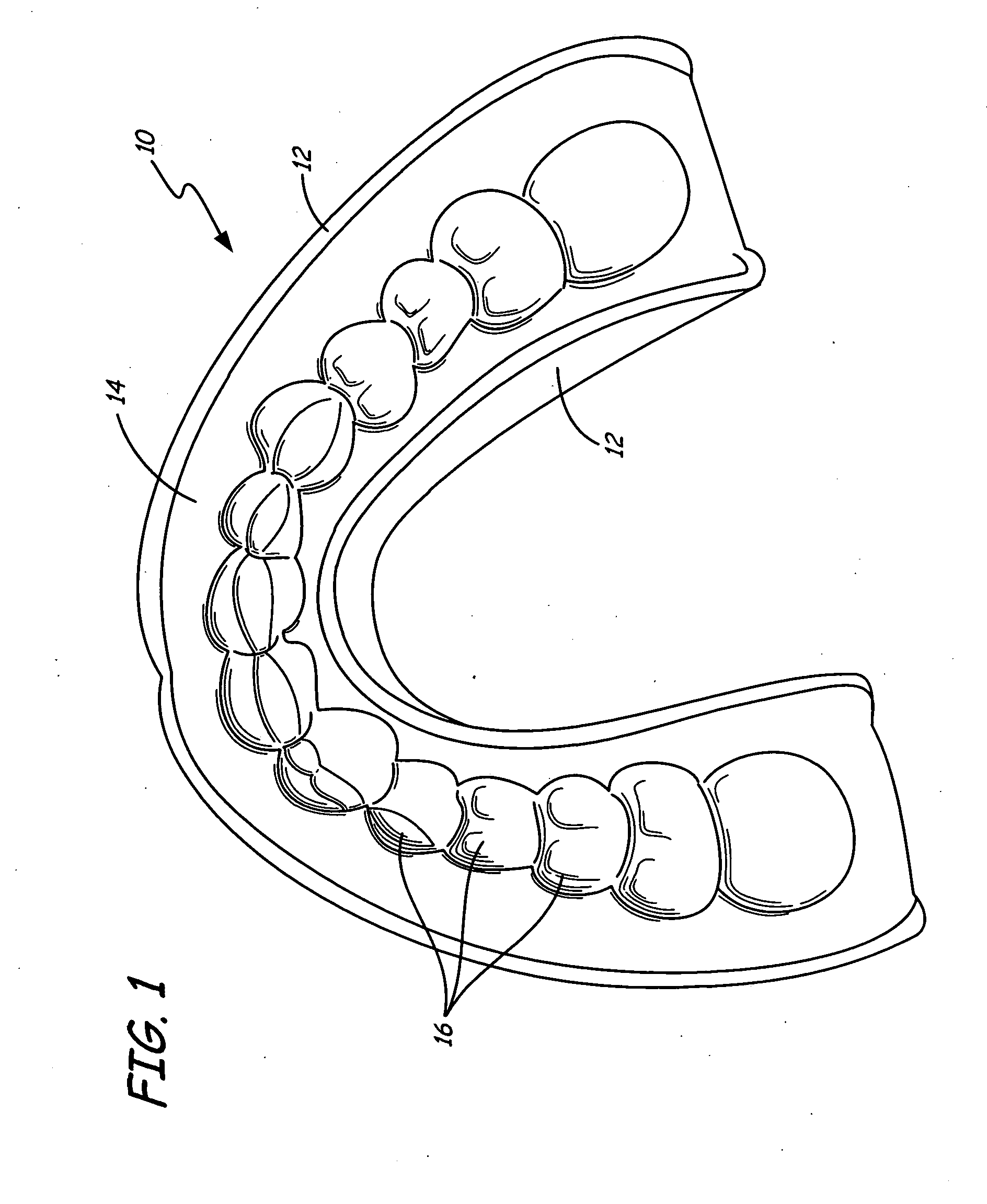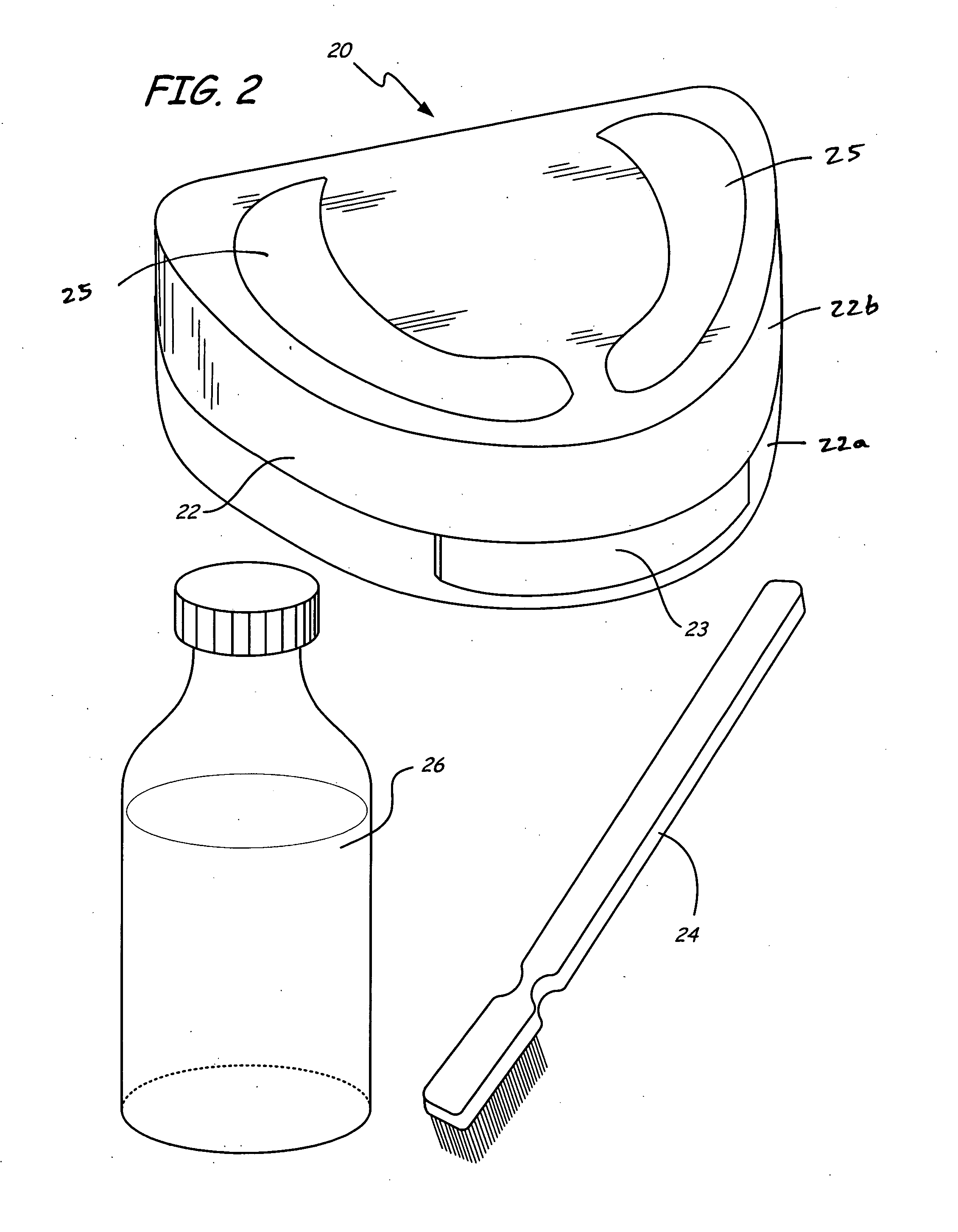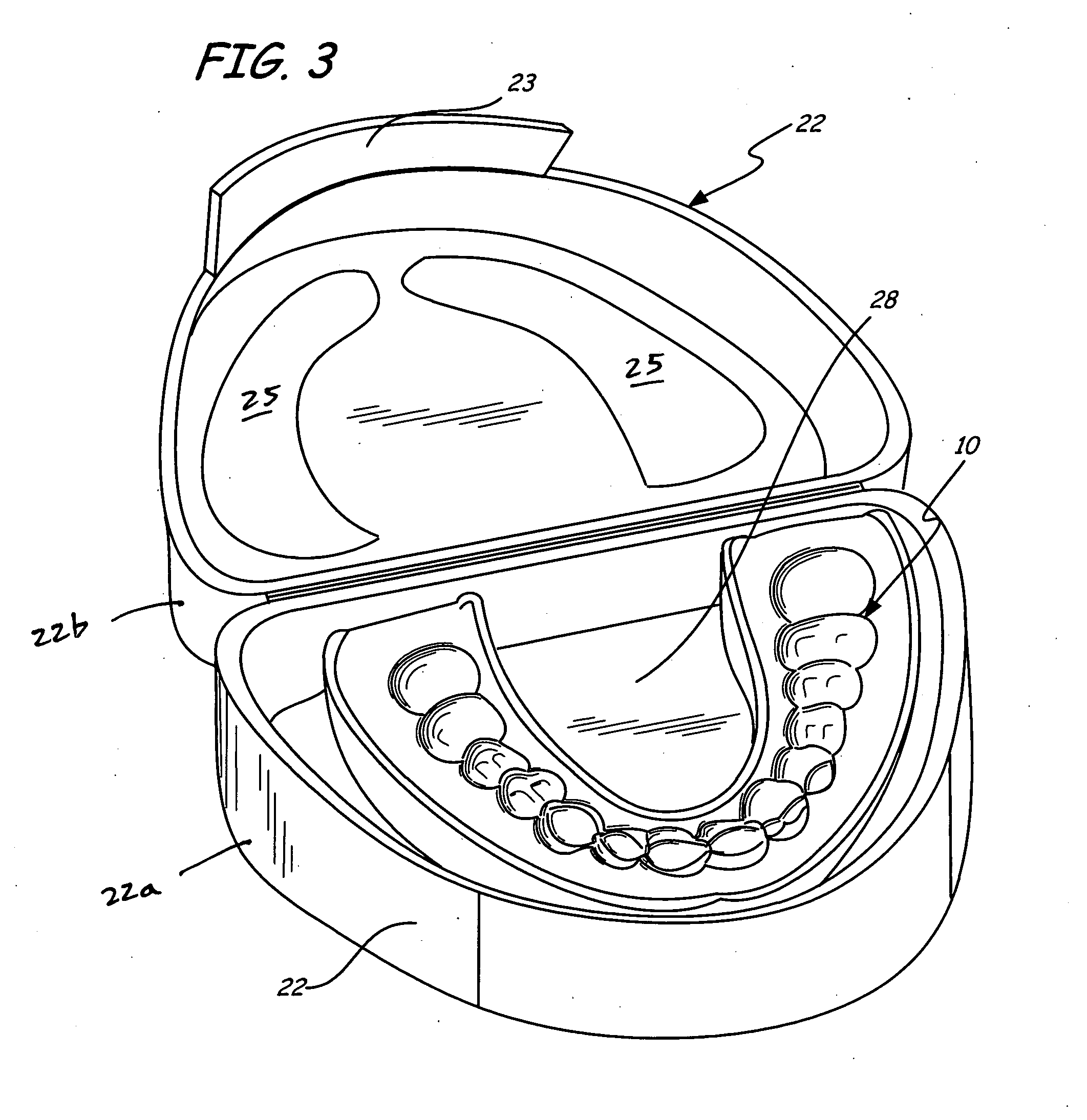Multi-purpose dental appliance cleaner
a dental appliance and cleaning technology, applied in the field of dental appliances, can solve the problems of affecting the health of the end affecting and affecting the cleaning effect so as to promote the health of the end user of the dental appliance, facilitate the cleaning, and facilitate the topical cleaning
- Summary
- Abstract
- Description
- Claims
- Application Information
AI Technical Summary
Benefits of technology
Problems solved by technology
Method used
Image
Examples
example 1
Preparation of the Cleaning Composition
[0083]An antimicrobial dental appliance cleaning rinse composition of the present invention was prepared as follows. The ingredients for the cleaning rinse composition are shown in Table 3:
TABLE 3IngredientWt %GramsDeionized water90.8902544.92Glycerin (99.9 wt % USP)5.000140.00Glacial acetic acid0.50014.00Grapefruit seed extract (GSE)1.00028.00Sodium benzoate / potassium sorbate0.2507.00PEG-40 hydrogenated castor oil2.21662.05Natural peppermint oil0.0441.23Blue #1 aqueous solution (0.1 wt %)0.1002.80100.002800.00
[0084]2,544.92 grams of deionized water and 140.00 grams of glycerin sourced from IFFCO (Malyasia) Sdn. BHD were added together in a mixing tank. 14.00 grams of glacial acetic acid sourced from Spectrum Laboratory Products Inc. of Gardena, Calif. was added to the mixture in the tank and mixed therein by means of an impeller paddle. Next, 28.00 grams of NutriBiotic® grapefruit seed extract (GSE) was added to the tank and mixed therein. 7.0...
example 2
Detection of Representative Antimicrobial Activities
[0085]A lab technician swabbed the interior surface of her mouth with a cotton swab. The swab was put into Brain Heart Infusion (“BHI”) Broth, which is a non selective nutrient enrichment broth. This was grown overnight at 35° C. The enriched broth was diluted using sterile Butterfield's diluents, and plated using TSA / YE (Tryptic Soy Agar with Yeast Extract). The dilution was done to get countable isolated colonies.
[0086]Fourteen isolated colonies were selected to be gram stained. All colonies were gram positive cocci. Each of these fourteen colonies was used to inoculate a separate BHI broth tube that was incubated overnight at 35° C. Petri plates were labeled 1-14 to correspond with the fourteen BHI broth tubes inoculated with the isolated colonies. To each petri plate, 1 ml of the grown BHI broth inoculum was added to the corresponding labeled petri plate. Fifteen ml of the TSA / YE agar was added to each plate and swirled to mix ...
example 3
Detection of Antimicrobial Activities for Known Bacteria Types
[0089]The method of Example 2 was repeated except that the seven petri plates were incubated with the following seven bacterial types in agar: Staphylococcus aureus, E. coli, Enterococcus facium, Pseudomonas aeroginosa, Shigella, Listeria monocytogenes, and Salmonella. An eighth petri plate was incubated with the enriched bacteria growth from the swab of the technician's mouth. 50 μl solutions of the 5%, 15%, 25%, 50%, and 100% concentrations of the antimicrobial cleaning rinse composition of Example 1 were prepared and used to inoculate wells made in the TSA / YE agar, as described in Example 2. Following overnight incubation of the petri plates at 35° C., it was determined that the cleaning rinse composition product produced zones of inhibition at all concentrations for the Staphylococcus aureus, Enterococcus facium, and Listeria monocytogenes bacteria. The Salmonella and swabbed mouth bacteria only showed zones of inhibi...
PUM
 Login to View More
Login to View More Abstract
Description
Claims
Application Information
 Login to View More
Login to View More - R&D
- Intellectual Property
- Life Sciences
- Materials
- Tech Scout
- Unparalleled Data Quality
- Higher Quality Content
- 60% Fewer Hallucinations
Browse by: Latest US Patents, China's latest patents, Technical Efficacy Thesaurus, Application Domain, Technology Topic, Popular Technical Reports.
© 2025 PatSnap. All rights reserved.Legal|Privacy policy|Modern Slavery Act Transparency Statement|Sitemap|About US| Contact US: help@patsnap.com



